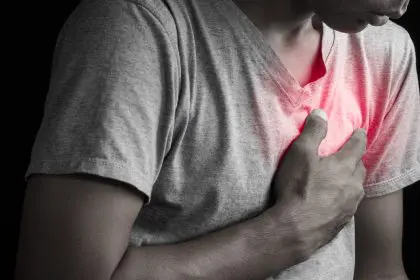In a fitness world obsessed with counting steps, researchers have discovered a potentially game-changing way to interpret the data already collected by your smartwatch. The new measurement—Daily Heart Rate Per Step (DHRPS)—promises to deliver more meaningful insights about your heart’s efficiency than tracking steps or heart rate alone.
What is DHRPS and why does it matter?
This emerging metric, pronounced “derps,” measures how efficiently your heart functions during daily activities by combining two common fitness tracker measurements. Northwestern University medical student Zhanlin Chen, who led the research, developed the calculation to extract more value from data people already collect.
It’s about maximizing the information we can gather from existing technology, many people track steps and heart rate separately, but combining them creates a more complete picture.
The calculation works by dividing your average daily heart rate by your average daily step count. For example, if your average heart rate is 80 beats per minute and you take 10,000 steps daily, your DHRPS would be 0.008.
Unlike step counts, which you can artificially increase on certain days, DHRPS reveals how efficiently your heart works during activity. This makes it harder to manipulate and potentially more valuable for tracking cardiovascular health over time.
4 ways to improve your DHRPS score
Research suggests that a lower DHRPS indicates better heart efficiency. The study established 0.0147 as an important threshold—scores above this level might suggest your heart works harder than necessary for your activity level.
To improve your score:
- Increase regular physical activity through consistent walking, running, or cycling
- Practice stress management techniques like meditation or deep breathing
- Maintain a heart-healthy diet rich in fruits, vegetables, and whole grains
- Prioritize quality sleep and minimize stimulants like caffeine and nicotine
These lifestyle changes can gradually decrease your resting heart rate while maintaining or increasing your activity levels—the perfect combination for a healthier DHRPS.
The future of fitness tracking
Despite DHRPS’s potential, researchers caution against abandoning traditional metrics like step counts. Instead, they recommend using DHRPS as a complementary measurement that provides additional context about your cardiovascular fitness.
Step counts remain valuable for tracking daily movement, DHRPS simply helps interpret what that movement means for your heart.
As wearable technology evolves, we may see DHRPS integrated into fitness apps alongside familiar metrics like calories burned and distance traveled. This could help people make more informed decisions about their exercise routines and overall health management.
Beyond the numbers
While DHRPS offers exciting possibilities, health experts emphasize that no single measurement provides a complete picture of wellness. Regular check-ups with healthcare providers remain essential, especially for those with existing heart conditions or cardiovascular risk factors.
The beauty of DHRPS lies in its simplicity—it requires no new equipment or special tests, just a new way of looking at data many people already collect. This accessibility could make sophisticated health monitoring available to anyone with a basic fitness tracker.
For the average person looking to improve their health, DHRPS represents another tool in an expanding arsenal of self-monitoring options. By paying attention to how efficiently your heart works during daily activities, you gain valuable insights that steps alone can’t provide.
As research continues and awareness grows, this unassuming calculation could transform how millions interpret their fitness data, potentially leading to more personalized exercise recommendations and better cardiovascular outcomes.
Whether DHRPS becomes the next fitness sensation or simply a useful addition to existing health metrics remains to be seen. But for now, it offers an intriguing new lens through which to view our daily movement and its impact on our most vital organ.
















